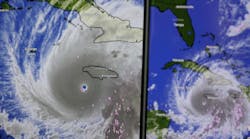NOAA Announces Gulf of Mexico Dead Zone Size
National Oceanic and Atmospheric Administration (NOAA)-supported scientists, led by Nancy Rabalais, Ph.D., of the Louisiana Universities Marine Consortium, found the size of this year’s Gulf of Mexico dead zone to be smaller than forecasted, measuring 3,000 sq miles. However, the dead zone, which is usually limited to water just above the sea floor, was severe where it did occur, extending closer to the water surface than in most years.
Earlier this summer, NOAA-sponsored forecast models developed by R. Eugene Turner, Ph. D., of Louisiana State University and Donald Scavia, Ph.D., of the University of Michigan predicted a larger-than-normal dead zone area of 7,450 to 8,456 sq miles. The forecast was driven primarily by the high nitrate loads and high freshwater flows from the Mississippi and Atchafalaya rivers in Spring 2009, as measured by the U.S. Geological Survey.
Rabalais believes the smaller-than-expected dead zone is due to unusual weather patterns that re-oxygenated the waters, among other factors. “The winds and waves were high in the area to the west of the Atchafalaya River delta and likely mixed oxygen into these shallower waters prior to the cruise, thus reducing the area of the zone in that region,” she said. “The variability we see within each summer highlights the continuing need for multiple surveys to measure the size of the dead zone in a more systematic fashion.”
“The results of the 2009 cruise, at first glance, are hopeful, but the smaller-than-expected area of hypoxia appears to be related to short-term weather patterns before measurements were taken, not a reduction in the underlying cause, excessive nutrient runoff,” said Robert Magnien, Ph.D., director of NOAA’s Center for Sponsored Coastal Ocean Research. “The smaller area measured by this one cruise, therefore, does not represent a trend and in no way diminishes the need for a harder look at efforts to reduce nutrient runoff.”
The average size of the dead zone over the past five years, including this cruise, is now 6,000 sq miles. The interagency Gulf of Mexico/Mississippi River Watershed Nutrient Task Force has a goal to reduce or make significant progress toward reducing this dead zone average to 2,000 sq miles or smaller by 2015. The Task Force uses a five-year average due to relatively high interannual variability.
For more information, visit www.noaa.gov.
Source: National Oceanic and Atmospheric Administration


